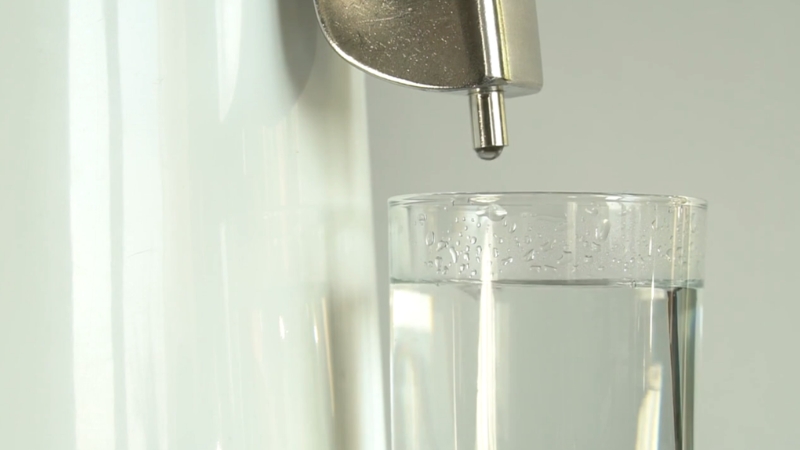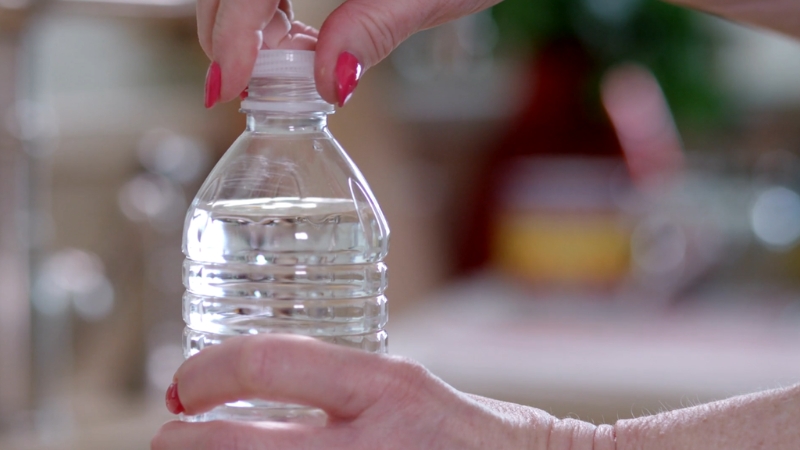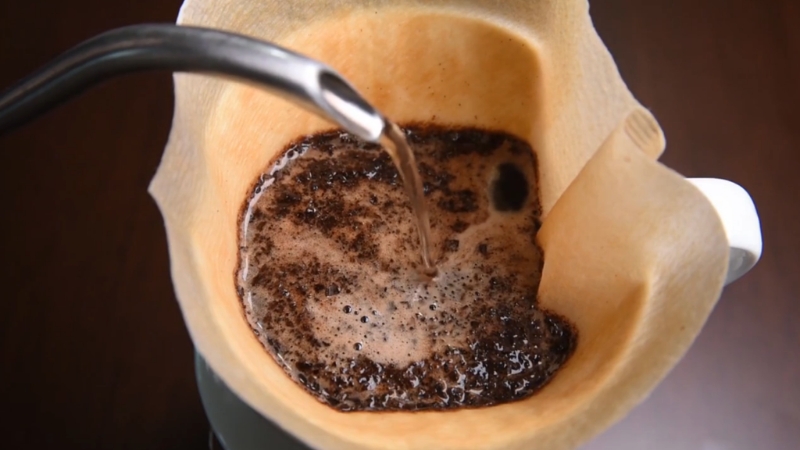Coffee brewing at home often feels straightforward, but the smallest details make a major difference in the final cup.
Since coffee is composed of about 98–99% water, the quality of that water plays a decisive role in shaping flavor, aroma, and even texture.
Poor water choices can make even premium beans taste flat or unpleasant, while balanced water chemistry enhances complexity.
Paying attention to the type of water, its mineral composition, and how it is treated can elevate a simple routine into a barista-level experience.
The Composition of Water and Its Role in Coffee Brewing
Water plays an active role in brewing coffee, shaping extraction and determining flavor balance.
While often overlooked, its composition is just as crucial as bean quality or brewing method.
The way minerals, pH levels, and purity interact directly influences what ends up in the cup.
Acting as a solvent, water dissolves compounds in the grounds, carrying oils, acids, and sugars into the brew.
When the chemistry is unbalanced, results range from bitter or flat to sour or overly sharp.
To better appreciate how water contributes to coffee, it helps to look at the main components that matter most:
Each element plays a role in extraction, body, and aroma, highlighting why water cannot be treated as a neutral ingredient.
Types of Water and Their Effects on Coffee Flavor
Different water sources affect coffee in distinct ways, shaping how flavors are extracted and perceived in the cup.
Choosing the right water can make the difference between a dull brew and one full of balance and character.
Type
Flavor Impact
Mineral Balance
Common Issues
Home Use Recommendation
Tap
Can be bitter or flat depending on hardness/softness
Often unbalanced; varies by region
Chlorine, metallic taste, inconsistency
Use with water filters for best results
Distilled & Reverse Osmosis (RO)
Weak, flat, or sour coffee
Lacks essential minerals
Poor extraction without re-mineralization
Not advised unless minerals are reintroduced
Filtered
Clean, balanced flavor
Retains helpful minerals
Few if filter is maintained
Highly recommended for daily brewing
Bottled & Spring
Can be smooth or overly bitter depending on brand
Varies widely; some too high, some too low
Inconsistent results between brands
Suitable if chosen carefully with moderate minerals
Tap Water
Most people rely on tap water for daily brewing, yet its quality varies significantly by region.
Hard water, containing elevated levels of calcium and magnesium, can lead to bitterness or an overly heavy texture.
Soft water, by contrast, often strips away vibrancy and results in a flat flavor.
Chlorine and treatment chemicals add another challenge, often leaving behind metallic or chemical notes.
Water filters are a practical solution for mitigating these issues, making local tap water more suitable for coffee.
Distilled and Reverse Osmosis (RO) Water

Some households turn to distilled or reverse osmosis water, believing purity equates to quality.
In practice, water stripped of minerals struggles to extract flavor compounds effectively.
The absence of calcium, magnesium, and sodium creates a cup that tastes weak, flat, or overly sour.
Reintroducing minerals is possible through special packets designed for coffee brewing, yet many home users avoid the extra step.
Filtered Water
Filtered water strikes a balance between cleanliness and essential mineral retention.
By removing chlorine, odors, and harmful impurities while leaving behind helpful minerals, filtered water produces a cup that is both clean and flavorful.
Many home brewers favor pitcher-based water filters or under-sink systems, as these are simple to use and provide consistency without the need to buy bottled water.
Among the available options, filtered water is often considered the most practical and effective for everyday brewing.
Bottled and Spring Water

Many coffee drinkers experiment with bottled or spring water, though results vary depending on brand and source.
Some bottled waters contain high levels of minerals, which can cause over-extraction and bitterness.
Others may be too low in essential minerals, resulting in bland coffee.
Spring, when carefully selected, offers balanced mineral content and neutral pH, making it suitable for brewing.
Reading labels and testing different brands helps identify water that enhances coffee flavor without overpowering it.
Mineral Content
Minerals in water act as silent influencers in coffee brewing, shaping how aromas, flavors, and textures develop.
For a clearer picture of their roles, the following breakdown shows the most important contributors to flavor balance:
Mineral
Effect on Coffee Flavor
Magnesium
Enhances fruity and complex notes; noticeable in lighter roasts. Promotes better extraction and highlights subtle characteristics.
Calcium
Adds creaminess and body to the cup. Excess can mask delicate aromas and dominate flavor.
Sodium
Softens acidity and smooths sharp edges. Beneficial in small amounts; too much makes coffee taste salty.
Potassium
Adds mild sweetness and reduces bitterness. High levels can flatten overall profile; common in some spring waters.
Iron
Imparts metallic and unpleasant flavors. Even trace amounts negatively impact taste and dull complexity.
Copper
Produces metallic notes and disrupts clean extraction. Should be avoided, similar to iron.
Chlorides
Can enhance sweetness perception at very low levels. Harmful at higher levels; damages both flavor and brewing equipment.
Bicarbonates
Stabilize acidity and balance flavor in moderation. Excess causes flat, chalky taste.
Total Dissolved Solids (TDS)
Represents combined mineral load in water. Ideal range: 140–150 ppm for balanced, full-bodied coffee.
Achieving the right balance is not always simple with untreated tap water. Excess calcium or bicarbonates, for example, are common in hard water areas.
Water filters and carefully selected bottled water help correct these imbalances, giving home brewers more control.
Many coffee enthusiasts also use inexpensive TDS meters to monitor consistency, adjusting their source until the ideal range is reached.
pH Balance and Coffee Taste
View this post on Instagram
pH balance plays a central role in shaping how coffee is perceived on the palate. Water that is too acidic or too alkaline can throw off even the best beans and most precise brewing methods.
Striking a slightly neutral range of 6.5 to 7.5 supports smoother extraction and prevents extreme flavors from dominating. Minerals act as buffers, stabilizing acidity levels during brewing.
Important points about pH and coffee taste:
Home brewers struggling with recurring sourness or bitterness often discover that improper pH balance is the hidden culprit, not the beans themselves.
Correcting pH ensures flavors are expressed in a more balanced way.
Summary
@jameshoffmanncoffee The differences in water used in coffee is enough to ruin my day. Are you team soft water or hard water? #coffeetok #specialtycoffee #coffeetoknow ♬ Strawberry – Prod by Rose
Water should never be seen as a mere brewing medium.
It is the largest component of coffee and has just as much impact on flavor as bean quality or brewing method.
Home brewers who take water chemistry seriously, using water filters, testing for minerals, or choosing bottled water carefully, unlock far more satisfying results.
For those who enjoy preparing coffee outside, the same attention to water applies, and the right outdoor cooking gear can make the process both practical and enjoyable.
A small investment in water quality turns ordinary coffee into a flavorful, aromatic experience worth savoring every day.

